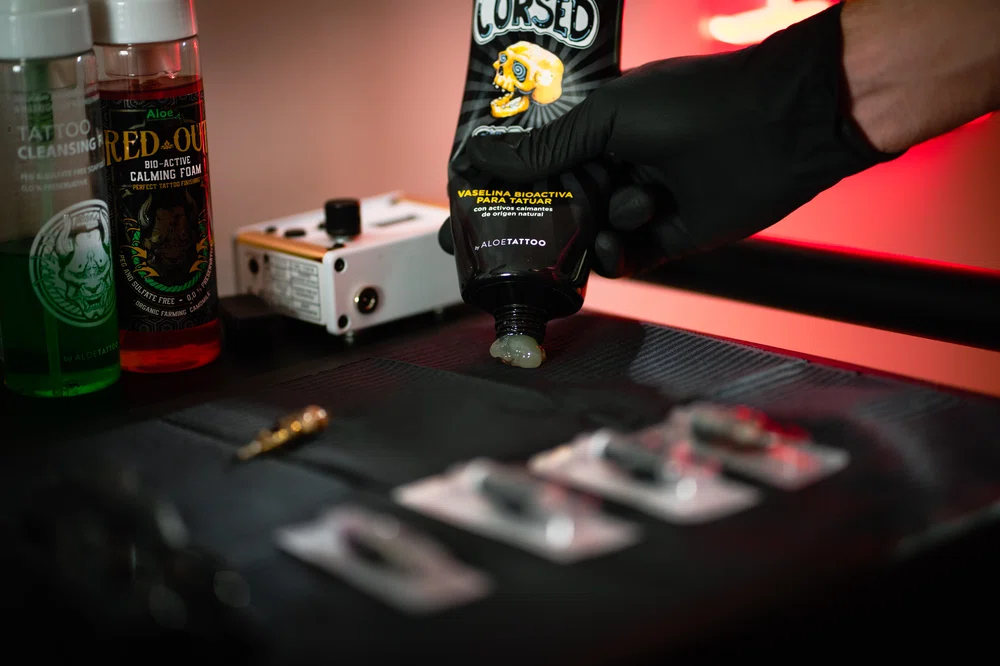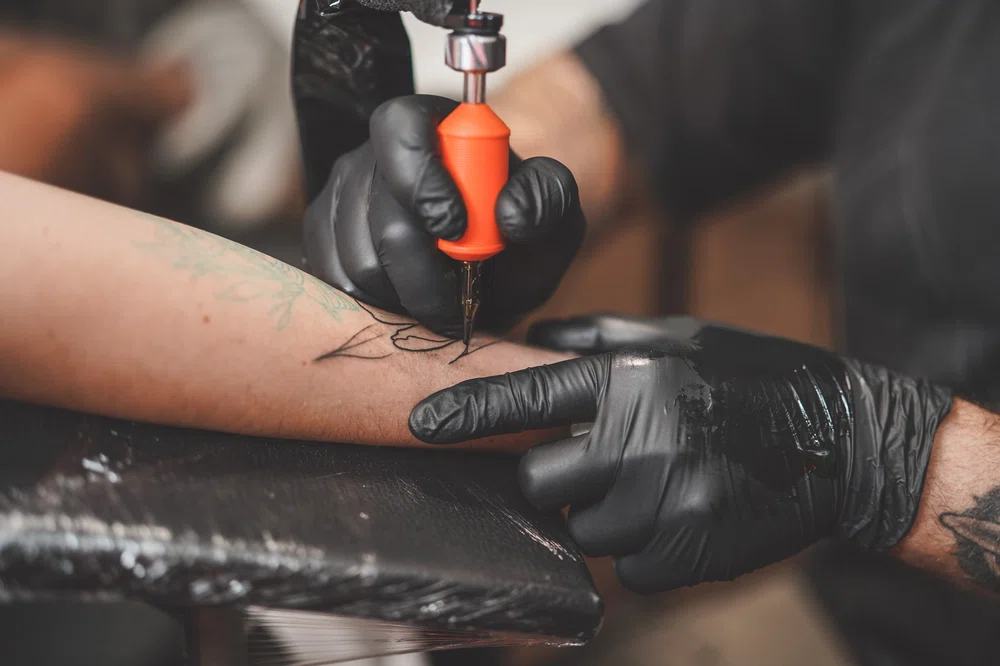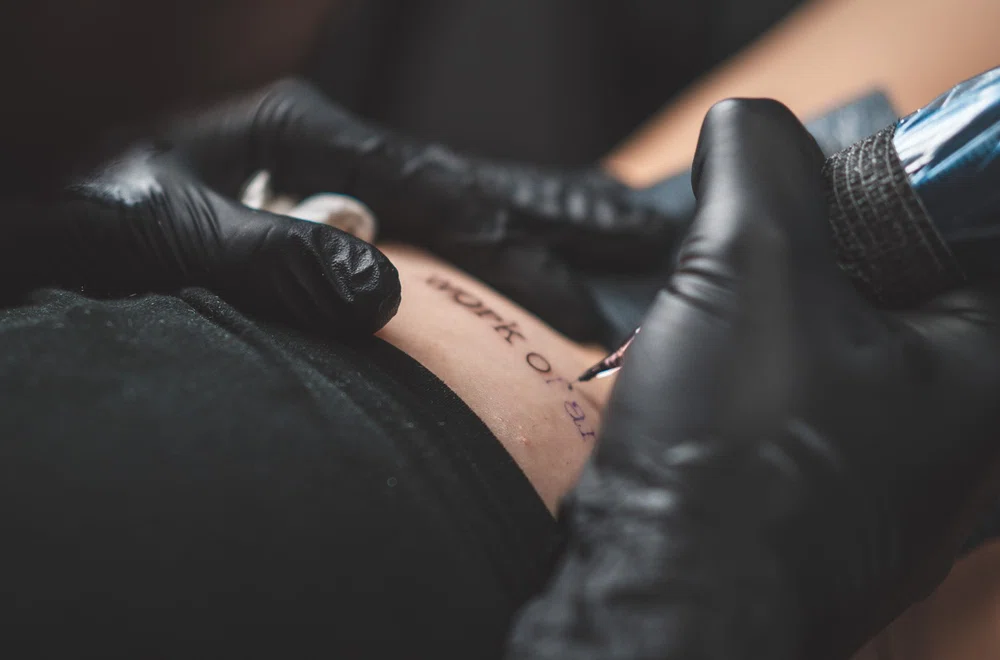In tattoos, there are many points to pay attention to, but many consider that lines are one of the most difficult things to make.
The handling of the machine, the steady hand, the voltage, everything is at stake when it comes to achieving a stroke without tremors. And like everything in tattooing, practice is necessary to achieve excellent results.
In this article, we’ll offer you a list of tips and alternatives to keep in mind and anticipate potential mistakes.
Keep reading to know more.
Tips and advice for tattooing line
1. Avoid making long lines at once.
It will give more room for tremors and imperfections to be much more noticeable.
Trying to tattoo a line will tire you out sooner than working in parts.
Some recommend making a single shallower pass, puncturing less deeply and slowly.
In this way, you will guarantee a guide so that on the second pass you can puncture more deeply and that the line is well-defined.
Be careful! These demands are a considerable risk since you may end up making a double line.
In the final result, all lines need to look made with a single stroke, without the junctions being noticeable, but this requires a lot of experience.
2. Put Vaseline before starting to make the line
The skin will be hydrated and will better withstand the puncture of the needles.
The use of Vaseline is essential, but don’t go too far. Use small portions only for hydration because if you apply too much, it will hinder your work.

3. Stay calm.
Finishing the tattoo quickly is not the solution.
All tattoos take time, and it is necessary not to panic; otherwise, you will neglect the details, making the final finish look bad.
Furthermore, remember that the lines on the tattoo are not the same as on the drawing. If you go too fast, you won't get the ink to penetrate deep enough, and when you wipe off the excess, you'll only be left with a faint line.
So work slowly and take your time.
4. Ensure stability.
Being comfortable is essential to maintaining control of the stroke.
Something very useful is to lean the elbow somewhere. In this way, you will control your weight better, and you will not get too tired.
Line work can take many hours of work, and it is not worth suffering for it.
On the other hand, make sure that the client is also comfortable to avoid unwanted movements. This will help both you and the client.
5. Start tattooing thicker lines
If you don't have a lot of experience drawing lines, you will have better control.
Styles like Fine-Line, which demand extreme accuracy, are very difficult. It is not worth wanting to start with this fully, better to go step by step. If you want to know more about this, read our article Minimalism: Fine-Line tattoos.
6. Hold your breath.
Holding your breath for a few moments helps to maintain a clean line.
Many recommend holding your breath for a few moments while drawing the line. This allows you to be in a “pause” position in which it is possible to better control involuntary movements.
7. Practice!
As experts say, practice makes perfect.
We’ll never tire of saying it, to be a good tattoo artist you have to practice. No matter how many years or how long you have been dedicated to this profession, the secret is not to neglect training.
Other important information
Skin

The thickness of the skin varies depending on the areas of the body, and this directly influences the depth of the needle when puncturing.
For example, the skin of the hands is much thinner and the contact with the bones is very close. Therefore, you should maintain a much lower depth than working in areas such as the legs or arms.
You must take this into account because it will depend on whether the result is good or a disaster. Moreover, knowing this is not only useful for line work, but is useful for all other techniques.
Remember that it is essential to squeeze the skin well.
Most of the errors or carelessness in the lines, often occur because the skin was not well taut from the beginning, so try to stretch to work more comfortably and that your lines are cleaner.
Needles

There is no “correct” size to tattoo lines, since they always depend on the design and the preferences of each tattoo artist.
Many recommend having a standard size like 5RL or higher, especially if you don't have a lot of experience. Remember that with thicker lines, you will have better control.
To learn more about this topic, read our Tattoo needles guide, to know in detail the uses for each size and type of needle.
Voltage
When making lines, you must consider what the size will be and whether you need a stronger line or not. This will depend on the needles you use, but above all on the voltage. If you use the ideal diameter, but you don't adjust the voltage, the job won't turn out well.
Some believe that the thicker, the lower the voltage and vice versa. But in any case, there is no exact formula for this, and it always depends on the type of work you do and the machines you have.
Practice makes perfect
We hope these tips are helpful. Keep in mind that experience is always the best guide in tattoos.
Take all this into account when working, and do not hesitate to ask us any questions you may have.
Struggling with tattooing lines in one go?
You don't need surgeon-like precision to achieve perfect lines; some techniques can save you from getting them wrong the first time...
Learn the 3 foolproof methods from Monlix, and much more, in our Seminar: The Essentials of 3RL Tattooing.